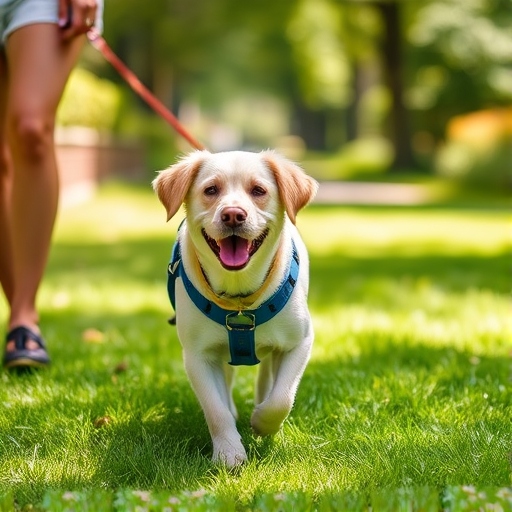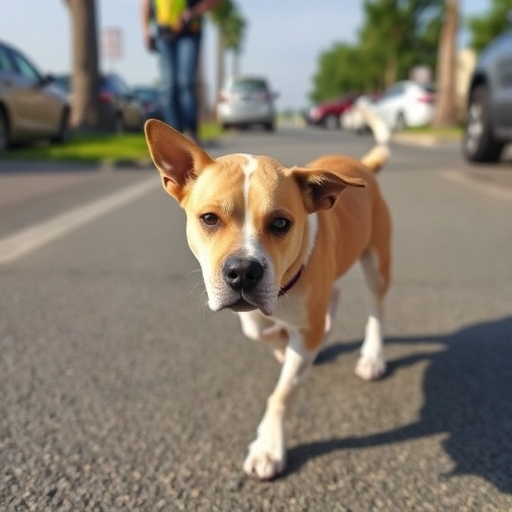Is your furry friend panting more than usual during walks? As temperatures rise, it’s crucial to understand when it’s too hot to walk your dog. Many pet owners unknowingly put their beloved companions at risk by exercising them in dangerous heat.
Don’t let your dog become a statistic! Heat stroke in dogs can lead to severe health complications and even death. But fear not – with the right knowledge and tools, you can keep your canine companion safe and comfortable during those sweltering summer months. Our comprehensive guide will walk you through everything you need to know about dog walking temperatures, from recognizing the signs of overheating to practical tips for safe summer strolls.
Ready to become a pro at temperature-conscious dog walking? Let’s dive into when it’s too hot to walk your dog, the warning signs to watch for, and how to keep your pup cool and happy all summer long.
When It Is Too Hot To Walk Your Dog?

A. Dog Walking Temperature Chart
When it comes to walking your dog, temperature plays a crucial role in ensuring your furry friend’s safety and comfort. Here’s a comprehensive dog walking temperature chart to guide you:
| Temperature Range | Safety Level | Recommendations |
|---|---|---|
| Below 32°F (0°C) | Caution | Short walks, and protective gear needed |
| 32-50°F (0-10°C) | Safe | Regular walks, monitor small/short-haired breeds |
| 50-68°F (10-20°C) | Ideal | Perfect for longer walks and outdoor activities |
| 68-77°F (20-25°C) | Comfortable | Enjoyable walks, stay hydrated |
| 77-86°F (25-30°C) | Watch closely | Limit exercise, provide water, avoid hot surfaces |
| Above 86°F (30°C) | Dangerous | Very short walks, early morning/late evening only |
Remember, these are general guidelines. Factors to consider when using this chart include:
- Breed characteristics (e.g., brachycephalic breeds are more heat-sensitive)
- Age and health of your dog
- Humidity levels
- Sun exposure
- Surface temperature (especially asphalt)
Always monitor your dog for signs of discomfort or distress during walks, regardless of the temperature. With this chart in mind, let’s explore the specific signs of overheating you should pay attention to during your walks.
Signs Of Overheating You Should Pay Attention To
Obvious Discomfort
When walking your dog in warm weather, it’s crucial to be aware of signs of overheating. One of the most noticeable indicators is obvious discomfort. Your dog may:
- Slow down or refuse to walk
- Pant excessively
- Seek shade or cooler surfaces
- Appear lethargic or unresponsive
Diarrhea Or Vomiting
Gastrointestinal distress can be a severe sign of heat exhaustion in dogs. If your dog experiences:
- Sudden diarrhea
- Vomiting
- Loss of appetite
These symptoms warrant immediate attention and cooling measures.
Drool Intensely
Excessive drooling is another clear sign of overheating. While some breeds naturally drool more, a sudden increase in drooling during a walk could indicate heat stress.
High Heart Rate
A rapid heart rate is a critical indicator of heat stress in dogs. Here’s a quick reference for normal vs. elevated heart rates:
| Dog Size | Normal Heart Rate (BPM) | Elevated Heart Rate (BPM) |
|---|---|---|
| Small | 100-140 | >140 |
| Medium | 80-120 | >120 |
| Large | 60-100 | >100 |
If you notice any of these signs, it’s essential to take immediate action. Move your dog to a cooler area, offer water, and consider cutting the walk short. In severe cases, contact your veterinarian promptly. Next, we’ll explore some practical tips for safe dog walking during summer months to prevent these overheating issues.
Tips For Safe Dog Walking During Summer Months

Check The Temp
Before heading out for a walk with your furry friend, it’s crucial to check the temperature. Use a reliable dog walking temperature chart to determine if it’s safe to walk your dog. Here’s a simple guide:
| Temperature (°F) | Safety Level |
|---|---|
| Below 45°F | Caution |
| 45°F – 59°F | Safe |
| 60°F – 75°F | Ideal |
| 76°F – 84°F | Caution |
| Above 85°F | Danger |
Remember, these are general guidelines. Factors like humidity, breed, and your dog’s overall health should also be considered.
Plan The Walking Time
Timing is everything when it comes to summer dog walks. Follow these tips:
- Walk early in the morning or late in the evening
- Avoid peak heat hours (usually between 11 AM and 3 PM)
- Keep walks shorter during hot days
Be Well Equipped
Proper equipment can make a significant difference:
- Bring plenty of fresh water and a collapsible bowl
- Use booties to protect paw pads from hot surfaces
- Consider a cooling vest for your dog on extremely hot days
Change The Strolling Route
Adapt your walking route to beat the heat:
- Choose shaded paths or trails
- Opt for grassy areas instead of hot pavement
- Look for routes with access to water (streams, lakes) for cooling off
By following these tips, you can ensure safe and enjoyable walks with your dog during the summer months. Next, let’s address some common questions about dog walking in various temperatures.
Frequently Asked Questions
A. Can I Walk My Dog In 80-Degree Weather?

Walking your dog in 80-degree weather can be safe if proper precautions are taken. Consider the following factors:
- Time of day: Early morning or late evening walks are best
- Duration: Keep walks shorter in warm weather
- Hydration: Bring water for both you and your dog
- Surface temperature: Check pavement heat with the 5-second rule
| Temperature | Safety Level | Recommendation |
|---|---|---|
| Below 80°F | Safe | Normal walks |
| 80-85°F | Caution | Shorter walks |
| Above 85°F | Danger | Avoid walking |
B. Does It Hurt Dogs To Walk On Hot Pavement?

Yes, hot pavement can cause severe burns to your dog’s paw pads. The surface temperature of asphalt and concrete can be significantly higher than air temperature:
- At 77°F air temperature, asphalt can reach 125°F
- At 86°F, it can soar to 135°F
- At 87°F and above, serious injury can occur within minutes
C. How Can I Protect My Dog’s Feet From Hot Pavements?

To protect your dog’s paws from hot surfaces:
- Use dog booties or paw protectors
- Apply paw balm before walks
- Walk on grass or cooler surfaces when possible
- Carry your dog over hot spots if necessary
- Use the 5-second rule: If you can’t hold your hand on the pavement for 5 seconds, it’s too hot for your dog’s paws
Remember, your dog’s safety should always be the top priority during walks, especially in warm weather.
The Bottom Line
As responsible pet owners, it’s crucial to prioritize our furry friends’ safety and comfort during walks, especially in extreme temperatures. By following the guidelines outlined in this dog walking temperature chart, you can ensure your canine companion stays healthy and happy year-round.
Here’s a quick reference table to help you make informed decisions about walking your dog in various temperature ranges:
| Temperature Range | Recommendation |
|---|---|
| Below 20°F (-6°C) | Limit outdoor time, use protective gear |
| 20°F to 45°F (-6°C to 7°C) | Exercise caution, monitor for signs of discomfort |
| 45°F to 80°F (7°C to 27°C) | Ideal temperature range for walks |
| 80°F to 90°F (27°C to 32°C) | Exercise caution, watch for signs of overheating |
| Above 90°F (32°C) | Limit outdoor activity, walk during cooler hours |
Remember these key points for safe dog walking:
- Always check the pavement temperature
- Provide plenty of water
- Watch for signs of overheating or discomfort
- Adjust walk duration based on temperature and your dog’s breed
By being mindful of temperature conditions and your dog’s needs, you can ensure enjoyable and safe walks throughout the year. Stay informed, stay prepared, and keep your furry friend’s well-being at the forefront of your outdoor activities.
Leave a Comment
Walking your dog is essential for their health and happiness, but it’s crucial to consider the temperature when planning your outings. Understanding when it’s too hot to walk your dog, recognizing signs of overheating, and implementing safety tips during the summer months can significantly impact your pet’s well-being.
Following the guidelines outlined in this post and staying vigilant about your dog’s comfort and safety, you can ensure enjoyable and safe walks year-round. Remember, your furry friend relies on you to make the best decisions for their health. Always prioritize their comfort and safety, and don’t hesitate to adjust your walking routine based on the weather conditions.

